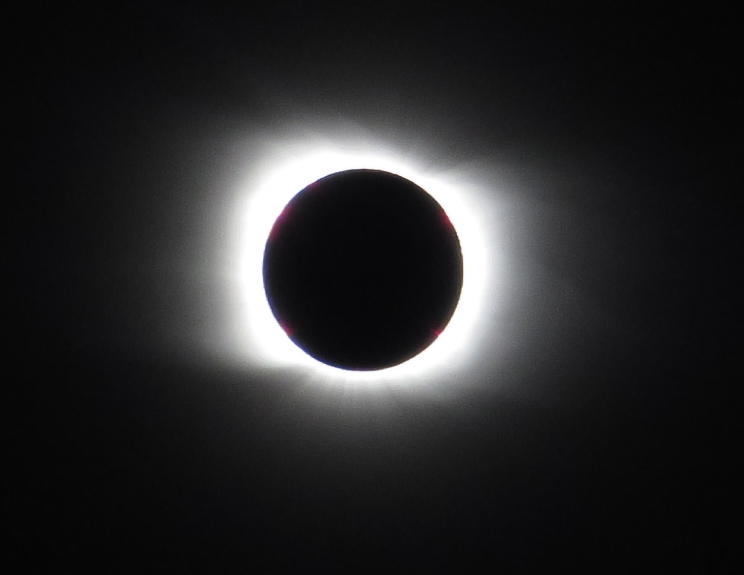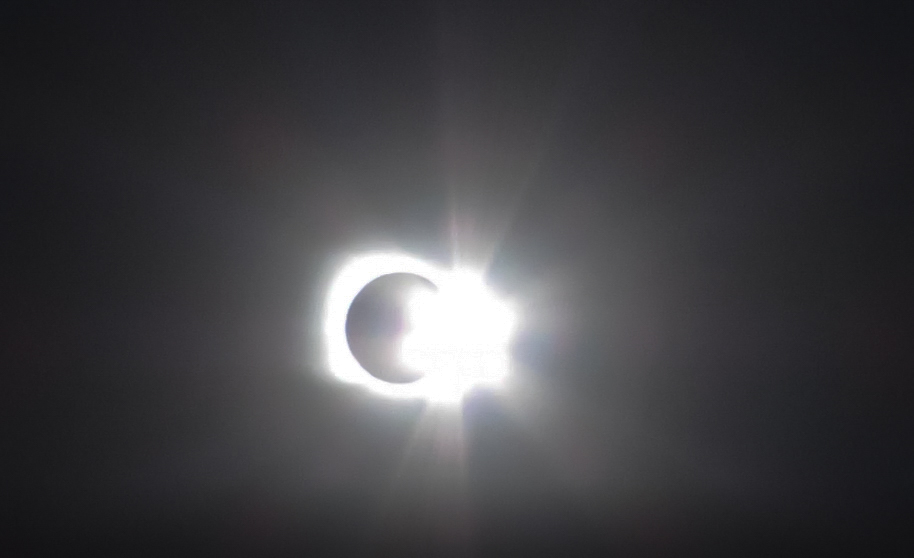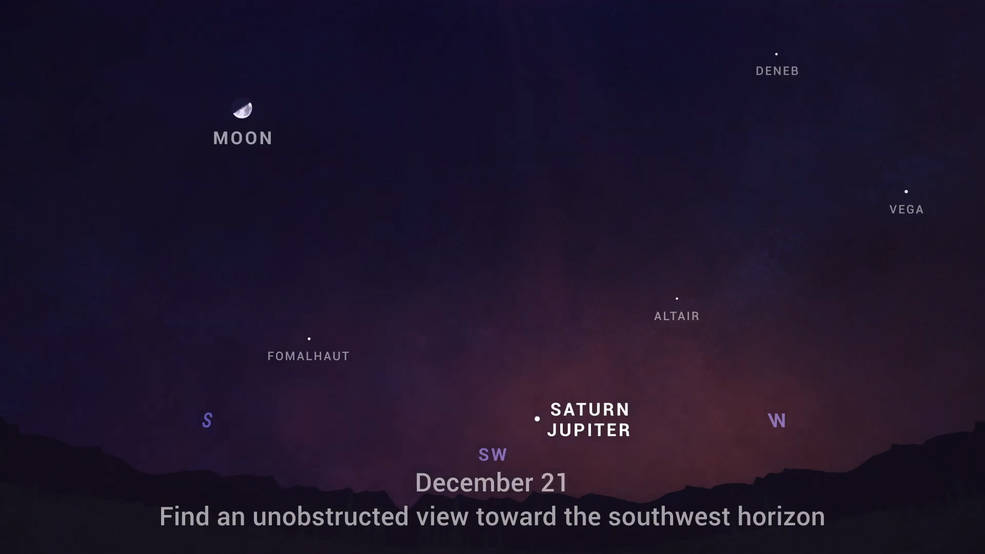A few days ago (Dec. 14th) there was a total solar eclipse visible across South America. Reports from Chile were disappointing, as unexpected clouds blocked the view. Fortunately, things were a little better in Argentina, where my friend, Leo Cavagnaro, was in just the right spot to see and photograph it. He reports that it was very windy, and this was due to the same weather system that brought the clouds over Chile, but it was mostly clear where he was. In the above photo, taken during totality, the Moon neatly blocks the view of the Sun, but we can see evidence of solar prominences in the 4 reddish areas around the edge of the Moon.
Leo also managed to capture the “diamond ring” phenomenon:
This happens when just a tiny bit of the Sun is showing at the beginning and end of totality.
The next total solar eclipse in the Americas will be in 2024. Based on how poorly I did trying to photograph the 2017 eclipse, I should probably start preparing for it now!
Speaking of now, the big astronomical event coming up on Monday, Dec. 21st, is the very close conjunction of Jupiter and Saturn. It’s not likely that we’ll be able to see it here in the Pacific Northwest, both because of expected cloud cover, and because the 2 planets will be very low in the southwestern sky (about 10 degrees above the horizon). There will no doubt be some live streams from better locations online somewhere. At the closest point the two planets will be about 1/10th of a degree apart. For reference, a Full Moon is about half a degree wide. Although Jupiter and Saturn come somewhat close every 20 years, they have not appeared this close together (from Earth) for 400 years, and at that time they were too close to the Sun for anybody to see it clearly. The last nighttime conjunction this close was 800 years ago.
Some people are referring to this conjunction as the “Christmas Star” and theorizing that it may have been the “Star of Bethlehem” that led the “3 wise men” (magi) there. It is interesting to note that although modern western cultures typically use the phrase “wise men”, many historical accounts referred to them as astrologers. As I have said before, the term “astrology” has a somewhat different meaning now as compared to 2,000 years ago. At some point in time, scientists felt the need to distance themselves from those who claimed to predict a person’s future based on the position of the stars at the time of their birth, so they came up with the term “astronomy” instead. But back then, an astrologer was someone who studied the stars. They may have hoped that this study would lead to understanding the future, but they were primarily concerned with simply gathering information about stars and other celestial objects.
In the year that is widely accepted as the birth year of Christ, there was no conjunction of Jupiter and Saturn. However, the actual year (and date) are really lost to history. This makes sense when you consider that Jesus was not widely known about or considered important until long after his death, so no contemporaneous records of his early life were made. However, in the year 7 BC there was a very interesting conjunction of Jupiter and Saturn. And in 6 BC Mars joined in for a triple conjunction. So it’s only a guess, but a pretty good guess, that astrologers travelled from the east (what is now Saudi Arabia, Iraq, and Iran) in an attempt to better understand these events.


